Nothing beats a juicy watermelon on a hot summer day – unless that watermelon has gone bad! Figuring out if your watermelon is still good to eat can be tricky. Sometimes the outside looks perfectly fine while the inside tells a different story. Here are ten simple ways to check if your watermelon is past its prime before you serve it at your next picnic or family meal.
1. Check the Rind for Mold or Dark Spots
The watermelon’s outer skin serves as its protective shield. When that shield shows signs of weakness through mold or dark patches, it’s time to reconsider your snack choice.
White, black, or green fuzzy spots indicate fungal growth that may have already penetrated deeper into the fruit. Soft, sunken areas suggest internal rotting has begun, even if the rest of the melon appears normal.
Remember that minor scratches or a yellowish patch where the melon rested on the ground are typically harmless. But when those blemishes turn dark, mushy, or develop an unusual sheen, your watermelon is waving the white flag of surrender to spoilage.
2. Smell It
Your nose knows! Fresh watermelons barely have any scent at all when whole, and cut ones offer just a subtle sweet freshness. Anything stronger is your first clue something’s wrong.
A fermented smell—similar to alcohol, vinegar, or sourdough—means yeast and bacteria have started breaking down the sugars inside. This fermentation process happens quickly once it begins, especially in warm environments.
Don’t ignore strange odors even if the watermelon looks fine. Unpleasant smells are nature’s warning system designed to protect you from consuming spoiled food. When in doubt, follow the wisdom of your sniffer and toss that suspicious melon away.
3. Texture of the Flesh
Fresh watermelon flesh should fight back when you press it—springy, firm, and crisp with clean knife cuts. Spoiled watermelon tells a different textural story entirely.
As watermelon ages, its once-firm flesh begins breaking down at the cellular level. You’ll notice it becomes grainy or mealy between your fingers, sometimes even mushy like overripe bananas. The worst cases develop a slimy film that feels slippery and unnatural.
Many people wrongly assume watermelon should be super soft and juicy. While juiciness is good, the flesh should still maintain structural integrity. When your watermelon starts feeling like applesauce rather than fruit, that’s Mother Nature’s not-so-subtle hint to find a fresher option.
4. Color of the Flesh
Nature designed watermelon with that gorgeous ruby-red color for a reason—it signals peak ripeness and nutritional value. When the vibrant hue fades or changes, something’s definitely amiss.
Freshness shows through consistent, bright coloration throughout the flesh. Warning signs include dull, washed-out pink areas, brownish or grayish patches, or an unusual translucent appearance that makes the flesh look almost glassy. Dark red spots that look almost maroon can indicate excessive ripening or the beginning stages of decay.
Some watermelon varieties naturally have orange, yellow, or even white flesh—but within each variety, the color should be uniform and vibrant. Any unusual color shifts or marble-like patterns that weren’t there when you first cut it suggest it’s time to say goodbye.
5. Too Much Liquid Inside
While juiciness is watermelon’s claim to fame, there’s a fine line between deliciously moist and suspiciously soggy. Excessive liquid pooling immediately after cutting signals cellular breakdown inside the fruit.
Healthy watermelon holds its moisture within its cell structures. As it spoils, those cells rupture and release their contents, creating puddles of juice that flow freely when you barely touch the flesh. The texture might even appear oversaturated or waterlogged in certain areas.
This excess moisture creates the perfect breeding ground for bacteria and yeasts that accelerate spoilage. If your cutting board looks like you spilled a glass of pink water rather than sliced a fruit, your watermelon has likely crossed the freshness finish line and needs to be discarded.
6. Insects or Larvae
Finding uninvited guests in your watermelon isn’t just unappetizing—it’s a definite sign to toss it out. Insects are nature’s cleanup crew, arriving when food starts to decompose.
Small holes in the rind might look innocent but often indicate where bugs have entered. Once inside, they lay eggs that hatch into larvae or continue feeding on the sweet flesh. You might spot tiny white worms, fruit flies, or ants making themselves at home in your melon.
Even if you only see insects in one section, the entire watermelon is compromised. Bugs carry bacteria that spread throughout the fruit, making it unsafe even if you cut around the visibly affected areas. When your watermelon becomes an insect hotel, it’s definitely checkout time for your fruit.
7. It’s Been Sitting Too Long
Time waits for no watermelon! Even under ideal storage conditions, these summer fruits have a limited lifespan before quality deteriorates. An uncut watermelon keeps for about two weeks at room temperature and maybe three weeks in the refrigerator.
Once cut, the clock ticks much faster—3-5 days refrigerated is typically the max before safety becomes questionable. The exposed flesh provides the perfect environment for microbial growth, even when properly wrapped. That half-eaten watermelon lingering in your fridge from last weekend’s barbecue? Its time has probably come and gone.
Keep track of when you bought or cut your watermelon. When memory fails, err on the side of caution rather than risking foodborne illness. Sometimes the calendar is the most reliable indicator of freshness.
8. Hollow Sound When Tapped
The watermelon knock test isn’t just for selecting ripe melons—it works for detecting spoilage too! Fresh watermelons respond with a deep, resonant hollow sound when tapped, similar to knocking on a door.
As watermelons age, they begin drying out or breaking down internally. This changes their acoustic properties. A dull thud or flat sound suggests the flesh inside has lost its proper structure and density. Think of it like the difference between a drum with tight skin versus one with loose, damaged covering.
Try comparing the sound to a watermelon you know is fresh. The difference can be subtle but noticeable. This method works best when combined with other checks, but it’s a handy first test before cutting into your melon to discover what might be lurking inside.
9. Strange Taste
Your taste buds are sophisticated detectors evolved specifically to protect you from harmful foods. When watermelon tastes off, that’s your body’s alarm system working perfectly!
Fresh watermelon offers clean sweetness with no aftertaste. Warning flavors include sourness (like yogurt), bitterness, alcoholic notes, or a fizzy sensation on your tongue. That carbonated feeling comes from actual fermentation—yeast converting sugars to alcohol and carbon dioxide, just like in beer brewing!
Never ignore these flavor warnings or force yourself to eat questionable fruit. Even a small taste that seems wrong means the entire watermelon should be discarded. That momentary disappointment is far better than the potential stomach upset that could follow from consuming spoiled fruit.
10. Stored Incorrectly
Storage history matters enormously when determining watermelon safety. A whole watermelon left baking in a hot car for hours might look fine but has begun rapid internal deterioration. Cut watermelon left unrefrigerated for more than two hours enters the food safety danger zone.
Temperature fluctuations accelerate spoilage too. Watermelons that have repeatedly warmed and cooled—like being taken to a picnic then returned to the fridge—develop quality issues faster than those stored consistently. The condensation from these temperature changes creates moisture that feeds bacterial growth.
If you can’t remember how your watermelon was stored or know it experienced poor conditions, play it safe. Even without visible signs of spoilage, improper storage history alone justifies finding a fresher replacement for your fruit salad or snack plate.
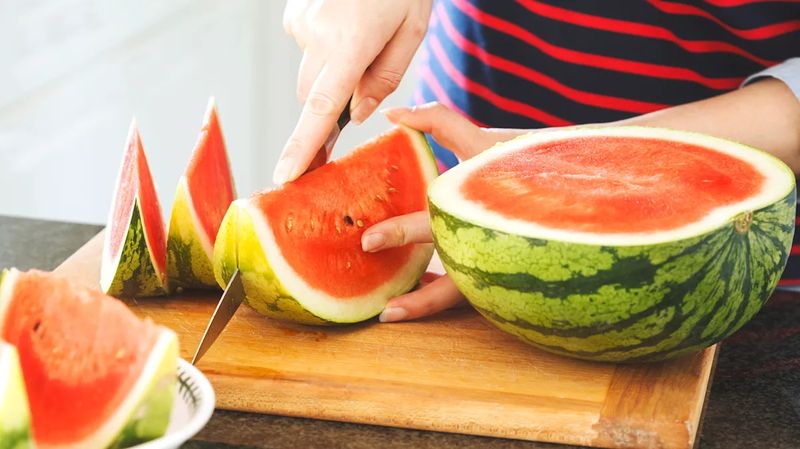
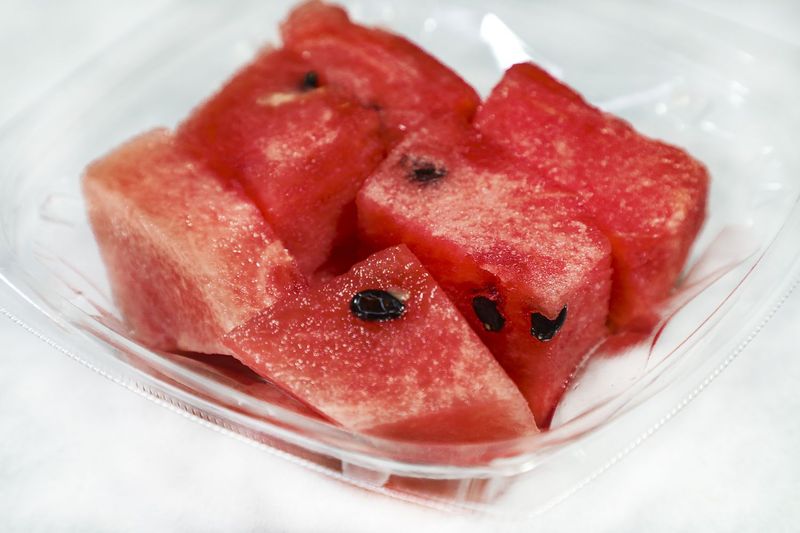
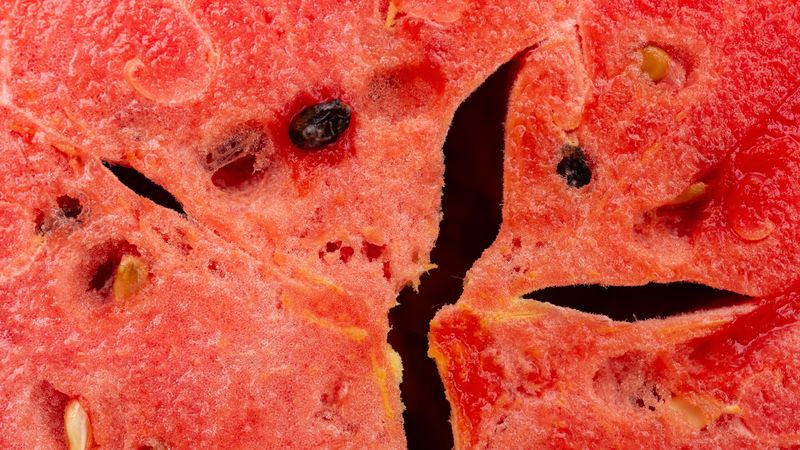


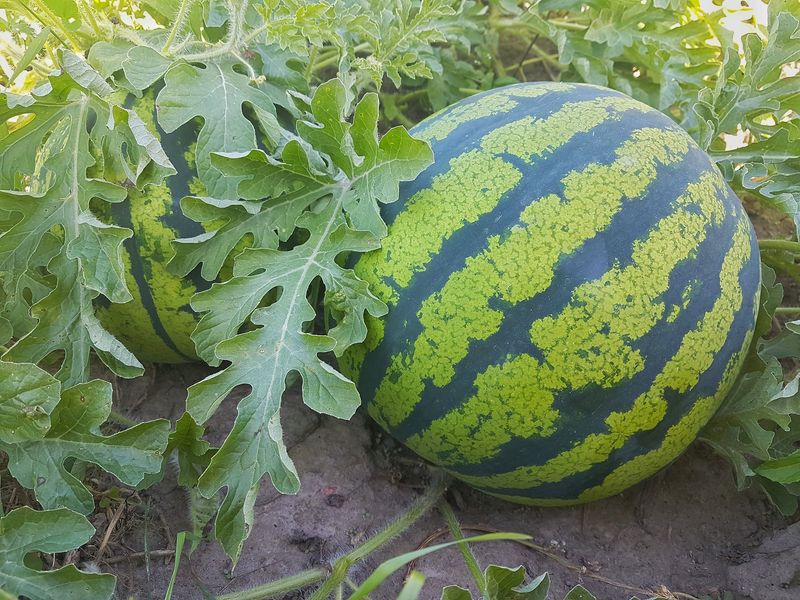
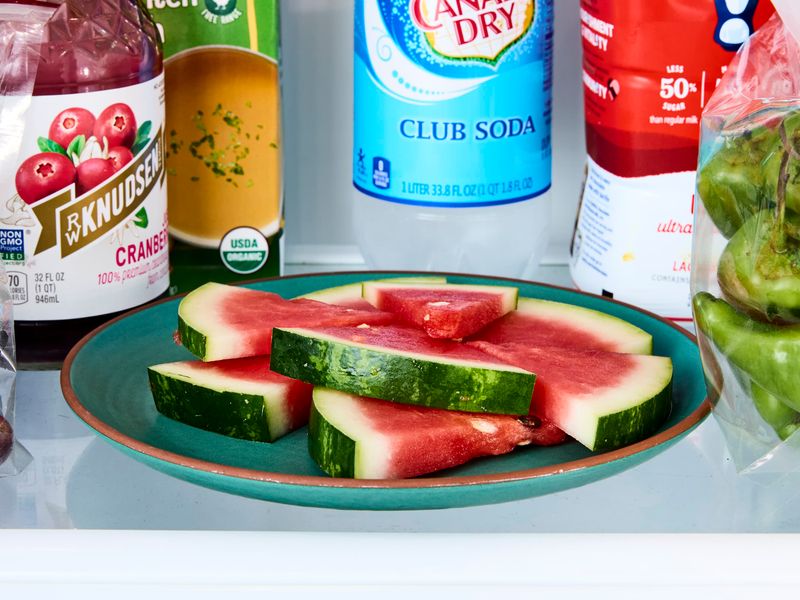
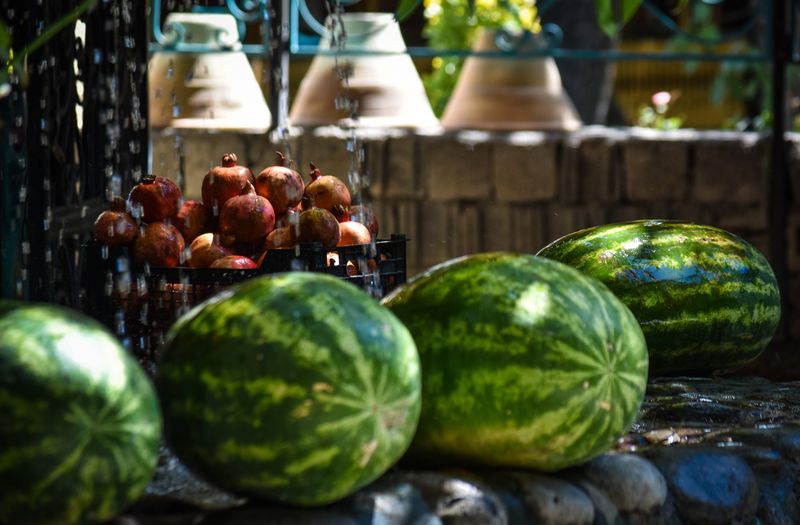
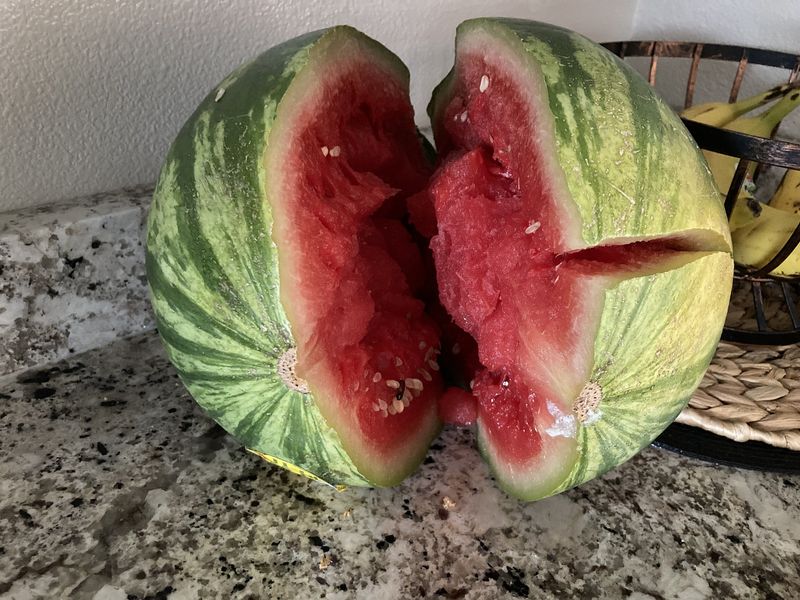
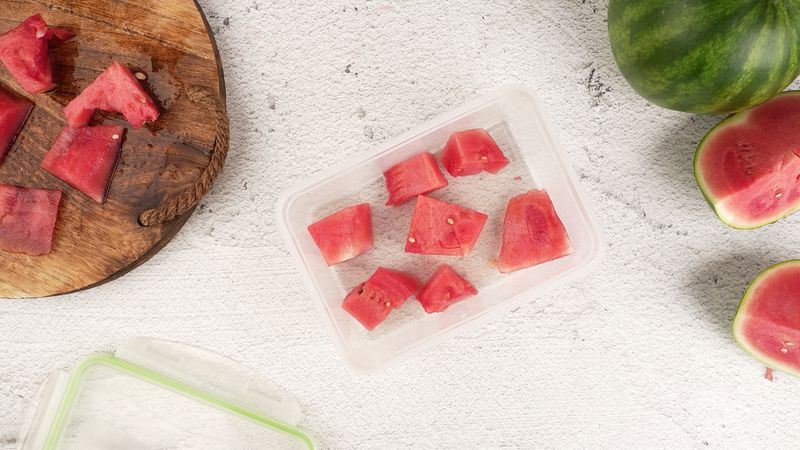
Leave a comment